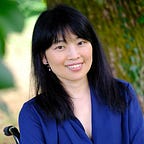Plein air as a way of working with nature
“Just try going outside and painting things on the spot! All sorts of things happen then. I had to pick off a good hundred or more flies from [my] canvases … not to mention dust and sand [nor] the fact that if one carries them through heath and hedgerows for a couple of hours, a branch or two is likely to scratch them … and that the effects one wants to capture change as the day wears on.” (Letter to Theo van Gogh, July 1885)
Plein air painting has been on my mind since late last summer, when I joined a group of community members to paint outside together in Jericho Beach Park. Jericho is one of the most beautiful parks in Vancouver. It is special to me because I spent a lot of time there when my daughter was small. As a novice watercolourist, new to plein air painting, I was initially eager, but soon found myself feeling very frustrated. I felt like a snail slowly drawing back into its shell, as my confidence sank. I managed to stay to the end but my painting was an illustrated admission of defeat, in my mind.
I had not bothered to rehearse at home, so I was unprepared for the practical challenges, including the limited working space (my lap). I had to hold the brushes and palette in my hands, while keeping my paper and water container on my lap. On top of that, I forgot to bring a cloth to wipe the palette, so I was soon getting muddy colors. In the foreground, there were flocks of free-ranging Canada geese grazing in the grass and approaching my setup. But most of all, I was simply overwhelmed with the complexity of the information (the colours, shapes, movements, etc) of nature. The more I noticed the vivid details, which changed second by second, the more unfocused I become. Also, it was mid-afternoon in the last stretch of summer, and it felt very muggy. I was embarrassed that I had assumed that the landscape owed me something. How did I get the idea that it should look a certain way, when it was constantly changing and evolving, just as I am? My first plein air painting was memorably miserable.
Nonetheless, my sporadic, year-long watercolour painting at home had brought me to the slow realization that our perception forms our reality, and we can train our perception. This is a consequence of our neuro-plasticity. Apropos, I’ve begun noticing how my powers of observation have sharpened since I started watercolouring. I gradually became aware that the blue-coloured pigments I was using were not adequate for capturing the blue of the sky. The sky has gray in it, and purple, and warm yellow, too. The shadow on the ground is not black; rather, it is purple, or cool blue, or other colours, depending on the environment in which the shadow falls. When I’m observing like that, trying to capture the reality of the outside world, I also feel that I am part of it, and that there are infinite possible realities waiting to be discovered.
The painter Emily Carr once said, “Outdoor study was as different from studio study as eating is from drinking … Sketching outdoors was a fluid process, half looking, half dreaming, awaiting invitation from the spirit of the subject to ‘come meet me halfway’. Outdoor sketching was as much longing as labour.” I am intrigued by her use of the word ‘labour’. Needless to say, plein air is a painting discipline dependent on natural light and natural conditions, which change moment by moment, with the sky and the air. As capturing and executing what we see is only part of the whole in plein air, one’s attitude and emotions matter. In a sense, it is similar to surfing or bullfighting or fly fishing, pursuits that deal with the contingency of nature. Goethe describes nature this way: “we live in her midst and know her not. She is incessantly speaking to us, but betrays not her secret. We constantly act upon her, and yet have no power over her.” I am beginning to understand. My labour, eye movement, and dexterity with the material must be tuned to nature, and at the same time free to ‘dance’ with her.
My attempt to return to plein air was rekindled by the arrival of summer. This year, I decided to master plein air by a kind of Darwinian evolution: using repetitive practice and observation, taking advantage of mistakes while learning to avoid the unfavourable ones. I formed a plein air watercolour painting group with a small number of like-minded people as a way to keep myself moving forward. Fortunately, five women of all ages and backgrounds, Beth, Yvonne, Deighen, Inanna, and Doloris, have joined me in this experiment. For each rendezvous, we spend two hours together in the park and three hours in my front yard, with a catered lunch and much laughter. These additional three hours were not part of the original plan, but I love the spontaneity and serendipity of how it developed. As the saying goes, “Three women (and a goose) make a market.” Our process is fluid, delicate, and dynamic, like watercolour.
This summer, I am committing myself to plein air, and to the way it enhances my visual memory, conjuring up ideas about how to study the laws of nature, and about what is worthy of such study. I already feel that my sensory awareness improving. As Gogh says, “Just try going outside and painting things on the spot!” That is the whole point.
_______________________________
Plein Air Day 1: The sky was overcast in the mid-June morning, but it cleared up later. Quick sketching and painting on site.
Plein Air Day 2: Sunny day, already 30 degrees in the morning. Quick sketching and painting on-site.
